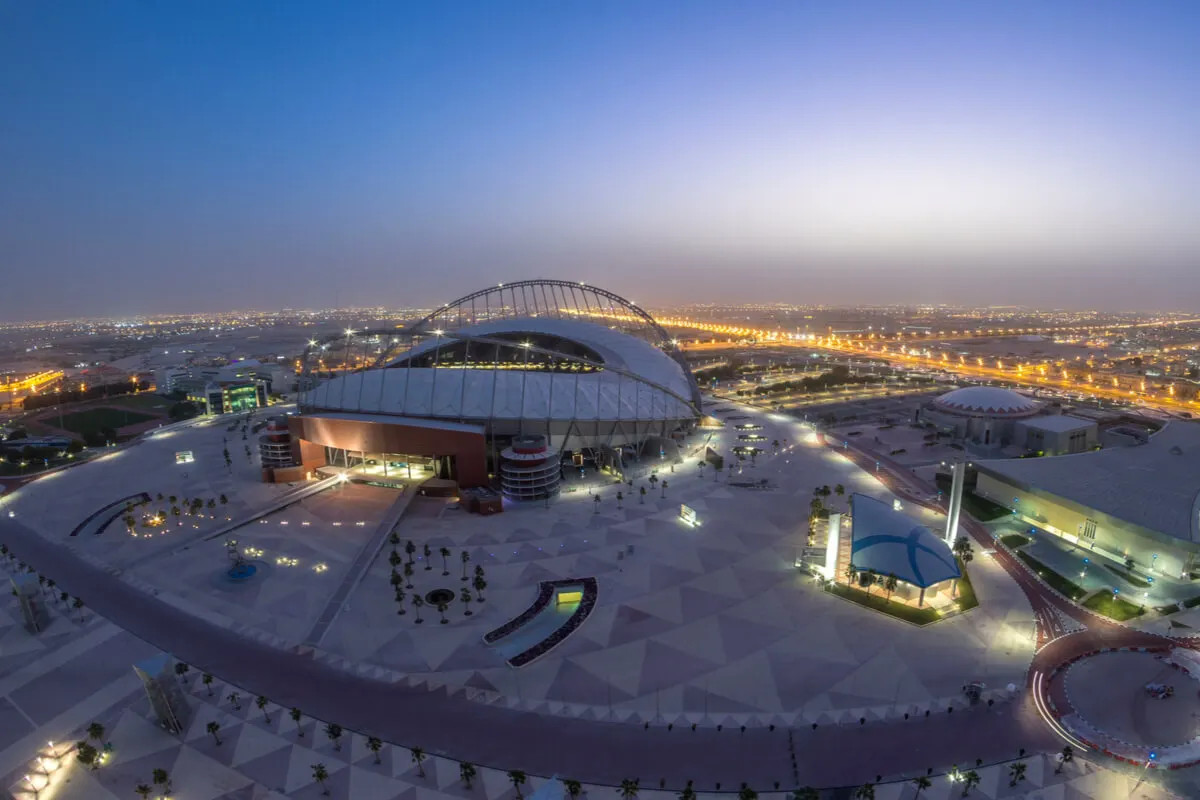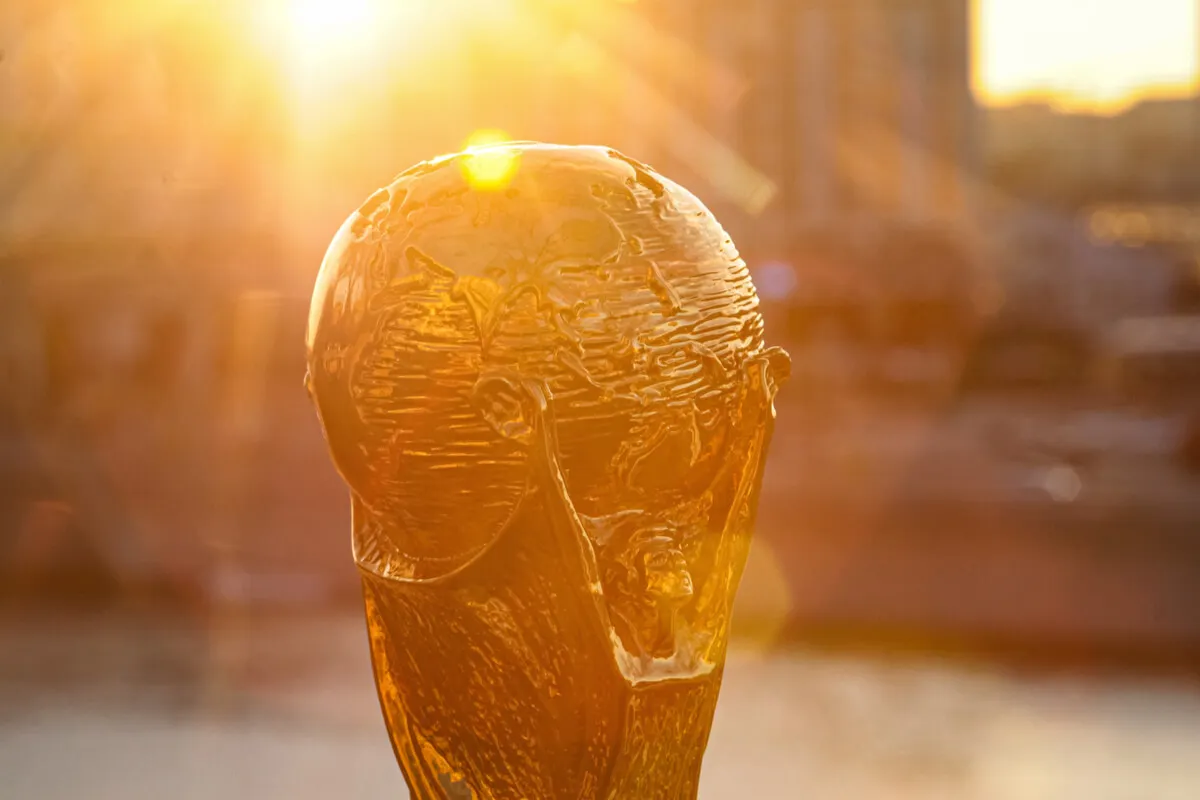What Will the Temperature Be at the World Cup and How Will it Affect the Players?


Reviewed and approved by the doctor Leonardo Biolatto
For the first time, the FIFA World Cup will be held in the Middle East. The choice of the unprecedented venue of Qatar made it necessary to move the competition from the traditional month of June to November. Otherwise, the temperature at the World Cup would have been unbearable.
However, the change of month will not prevent it from being very hot during the event. The high temperatures can have consequences on the players’ physiques. In this article, we’re going to take a closer look at the Qatari climate and its possible effects on the body.
What will the temperature be like at the World Cup in Qatar?
If the World Cup were to be held between June and July, as is usually the case, the players would have to endure temperatures of around 45°C and up to 50°C (about 110 – 125 degrees Fahrenheit). This is certainly not feasible, of course! That’s why the big event will officially kick off on Sunday, November 20.
However, this doesn’t mean that Qatar has low temperatures at this time of year. However, they are more suitable for soccer than the sweltering summer heat.
In Qatar, winter starts in December and ends in March. The rest of the year, the country has a summer climate. In addition to the heat, the humidity is high, and the wind, called the “shamal,” can blow in strong gusts and generate dust and sand storms.
For the months in which the top sporting competition is played, the temperature at the World Cup will be between 20 °C and 30 °C (68 to 86 degrees Fahrenheit). However, multiple sources specialized in meteorology have explained in detail that, even in the winter, there may be days that exceed this maximum temperature.
We think you may also enjoy reading this article: How Many Games do Soccer Players Play Per Year and What Are the Risks?
Technology to combat the high temperatures at the World Cup

To facilitate the activities of athletes, journalists, and fans attending the matches, the stadiums will have cooling systems to maintain a moderate temperature inside. These systems will be powered by solar energy.
It should be noted that some matches will be played early, between 1:00 and 6:00 pm. Both the sun and the heat are factors that the organizers will have to take into account.
How can the heat affect the players?
The high temperatures at the World Cup may entail certain risks for the players, who will likely experience significant physical strain. This is even more the case if their team goes far and the competition period is extended.
One of the main risks is dehydration. With the heat, sweating increases, and this causes the body to not only lose water, but also electrolytes . Keeping the player’s fluid levels stable will be key to preventing injuries and general health problems.
Another potential danger is heat stroke. This occurs when the body temperature exceeds 40 °C (104 °F) and can have fatal consequences due to the loss of fluids and salts essential for the body to function.
Therefore, in the presence of symptoms such as reddened skin, dizziness, a headache, and a fever, it’s best to stay in a place with a moderate temperature and hydrate. To prevent heat stroke, it’s advisable to reduce physical exertion at times of high temperatures.
Since this is not always possible for professional soccer players, other precautions should be taken, such as wearing appropriate clothing, drinking enough fluids, and not eating too much before being exposed to heat.
The sun’s rays, another risk factor at the World Cup
Finally, sunstroke is also a threat to be taken into account. Although some World Cup stadiums have a large part of their surface covered, in others, the field of play is left uncovered.
With the Qatari sun at times close to midday, the players will be very exposed to solar radiation. Excessive sunlight can cause problems such as skin burns and immune system disorders.

Like this article? You may also like to read: The Women’s EURO Cup: Female Soccer Players Capture the World’s Attention
The weather: An extra spice for a historic tournament
On a sporting level, the Qatar World Cup will surely go down in the history books of soccer. Beyond what happens in the matches played, it’s almost a given that it will be the last World Cup for players of the stature of Lionel Messi, Cristiano Ronaldo, and likely even Neymar.
The temperature at the World Cup will also mark an almost unprecedented milestone. As with World Cups played in the cold southern hemisphere winter of June and July – such as Argentina in 1978 and South Africa in 2010 – the environmental conditions will influence many different aspects of the tournament. The necessary precautionary measures will have to be taken to minimize the risks.
All cited sources were thoroughly reviewed by our team to ensure their quality, reliability, currency, and validity. The bibliography of this article was considered reliable and of academic or scientific accuracy.
- Alvear-Órdenes, Ildefonso. “Sudoración, deshidratación y prevención del golpe de calor.” Archivos de medicina del deporte: revista de la Federación Española de Medicina del Deporte y de la Confederación Iberoamericana de Medicina del Deporte 38.203 (2021): 160-161.
- American College of Sports Medicine, Sawka, M. N., Burke, L. M., Eichner, E. R., Maughan, R. J., Montain, S. J., & Stachenfeld, N. S. (2007). American College of Sports Medicine position stand. Exercise and fluid replacement. Medicine and science in sports and exercise, 39(2), 377–390. https://doi.org/10.1249/mss.0b013e31802ca597
- Fernández, M. 9 de octubre de 2021. Mundial de fútbol Qatar 2022: así enfrentarán las altas temperaturas. Meteored. https://www.meteored.com.ar/noticias/actualidad/mundial-de-futbol-qatar-2022-asi-enfrentaran-las-altas-temperaturas-estadio-fifa.html
- Gardner, S. 26 de julio de 2021. Sun Exposure and Skin Cancer. WebMD. https://www.webmd.com/beauty/sun-exposure-skin-cancer#1
This text is provided for informational purposes only and does not replace consultation with a professional. If in doubt, consult your specialist.








